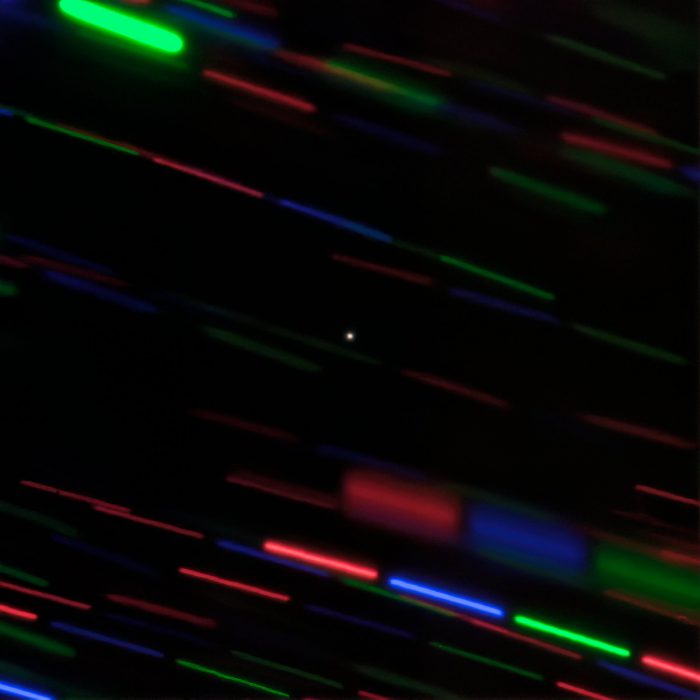Mercury and Venus have zero. Mars has two. Neptune, 14. Uranus, 27. Saturn? 64!
And Earth has one.
Of course, we're talking about moons.
From the asteroid-sized to the dwarf planet-sized (Jupiter's Ganymede, Saturn's Titan, and our Moon are just some of the moons that are bigger than Pluto), these rocky bodies orbit planets, making them there home. And sometimes? We discover that there are even more moons around a planet than we first thought. Case in point? As of discoveries made in 2018, Jupiter actually has 79 moons, not 67, as originally thought.
And Earth? It actually has two.
Hello, new neighbour
Wait, what? TWO MOONS? Where? What? How?
BIG NEWS (thread 1/3). Earth has a new temporarily captured object/Possible mini-moon called 2020 CD3. On the night of Feb. 15, my Catalina Sky Survey teammate Teddy Pruyne and I found a 20th magnitude object. Here are the discovery images. pic.twitter.com/zLkXyGAkZl
— Kacper Wierzchos (@WierzchosKacper) February 26, 2020
We're surprised, too!
The name of this asteroid is 2020 CD3. And yes, we did say 'asteroid', and this goes a long way to explaining why we've only just discovered this 'new moon'.
That's because 2020 CD3 is tiny. Researchers estimate that it is between 1.9 and 3.5 metres (6.2 and 11.5 feet) across — that's somewhere between the height of an adult male and the length of a small car. (Spoiler alert: this is one moon that we're not landing on.) Given its small size, it's maybe not that surprising that we haven't noticed it until now.
That and the fact that it only began orbiting Earth about three years ago. Hello?
And goodbye?
2020 CD3 is what is known as a 'captured object'. This just means that it was once a rogue asteroid, minding its own business, lazily orbiting the Sun. But then one day, it got too close to Earth and was 'captured' by our gravity. (We are quite charming, after all!) The GIF below shows the estimated orbit paths of this minimoon, starting with the moment it was first captured in December 2017.
Here's an animated GIF of our new mini-moon 2020 CD3, discovered by @WierzchosKacper. Rotating frame keeps the Earth/Sun line stationary. Orbital elements courtesy of IUA MPEC. https://t.co/dok3jn3G9hhttps://t.co/x1DXWLq2vm pic.twitter.com/O3eRaOIYjB
— Tony Dunn (@tony873004) February 26, 2020
That is one irregular orbit, right? We're getting dizzy just looking at it. And it is also an orbit that experts believe is destined to end very soon. In fact, if the predictions are correct, 2020 CD3 will leave Earth's orbit some time in April. As in next month.
Oh well, it's back to one moon for us! Fun while it lasted. Easy come, easy go. Until that time, nice to have you around, mini-moon. We're sorry it took so long for us to say hi!
 A picture of Earth's car-sized minimoon, 2020 CD3. (Gemini Observatory/NSF's NOIARL/AURA/G. Fedorets)
A picture of Earth's car-sized minimoon, 2020 CD3. (Gemini Observatory/NSF's NOIARL/AURA/G. Fedorets)









